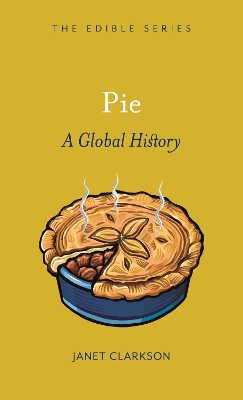Edible
2 total works
From the restorative powers of chicken soup on a sick day to the warmth of a bowl of chowder on a wintry night, there is no food quite as comforting and emblematic of home as soup. Soup, as Janet Clarkson tells us, is the first true culinary creation of humanity, and it has made a long journey from the prehistoric cave to the kitchen table and the white linens of Michelin-starred restaurants. Tracing its myriad reinventions through history and across the globe, Clarkson argues in Soup that it is the only truly universal dish. Every culture in the world makes soup, and it is widely valued as a dish adaptable to any situation and available ingredients: from the swill of the workhouse to soldiers' rations on the battlefield or the most delicately crafted consomme, and from meat and vegetables to vipers, blood or precious stones. Clarkson explores how soup got its name and describes the different roles of soup in Eastern and Western cuisine. Featuring the national soups of many countries and including an assortment of anecdotes and recipes taken from seven centuries of culinary history, Soup paints an absorbing picture of this most fundamental food.
The pie, to quote one Victorian writer, is a great human discovery which has universal estimation among all civilized eaters'. "Pie" explores the development of this most esteemed article of food, from the ancient pie, its crust inedible and used for preserving the contents, to its elevation as the highest expression of culinary art. The pie symbolizes family, celebration and ritual, and appears in literature from Chaucer to Jane Austen and in art from Monet to Hogarth. It is the most adaptable of foods, portable, nutritious and tasty, and its contents vary throughout the world, from fish to meat, from sweet to savoury, to the mysterious and sinister Old Maid' or Scrap' pie. A pie can be an economical investment for all miscellaneous savings', as Dickens called it, or a momentous and expensive work of art; it can even contain nothing but live birds, frogs or dancing girls. A celebration of the pie as well as a hugely informative history, with a selection of recipes from throughout the life of the pie, "Pie" will satisfy the appetite of anyone interested in the history of food and cookery.

